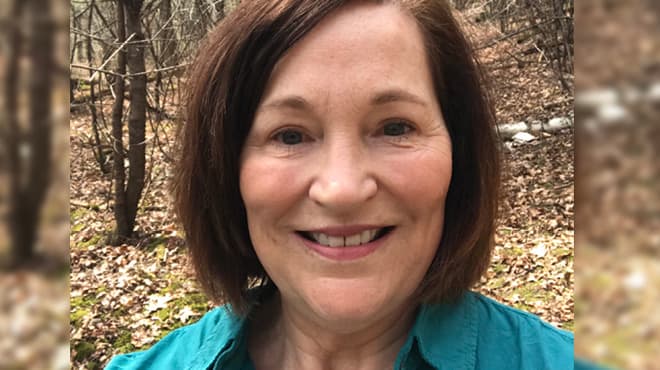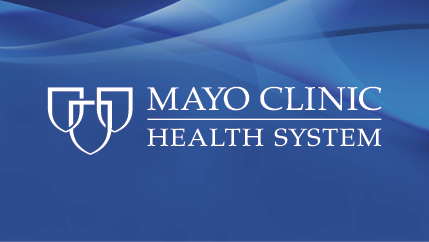Recent Posts
-
 Patient StoriesA lifesaver saved: An EMS veteran’s journey from rescue to recoveryNovember 14, 2025
Patient StoriesA lifesaver saved: An EMS veteran’s journey from rescue to recoveryNovember 14, 2025 -

-

Eye care visit leads to brain surgery for pain relief

Nancy Hannafin makes a point of appreciating the little things in life: birds singing, flowers blooming, sun shining. But prior to now, crippling pain prevented her from enjoying them.
“I had nerve pain in my face, ear and teeth, and it was horrific,” says Nancy, 79, of Eau Claire, Wisconsin. “There was no medication that could help it — it wouldn’t touch it. I went for two years trying to find out what it was.”
Nancy explained her excruciating pain to dentists, orthodontists and other doctors — all to no avail. “And we have some excellent doctors here,” she says.
Nancy describes the pain as how it would feel “if a dentist drilled in your mouth without anesthetic.” She says the pain was sporadic, kept her from sleeping and it hurt to chew.
“You’re about ready to go crazy because you know something’s going on,” Nancy says. “The side of my face was getting numb. The pain went through my eyes, through my forehead, down the back of my head into my teeth, and nobody knew what it was.”
But Jaclyn Morin, O.D., an optometrist at Mayo Clinic Health System in Eau Claire, was able to help unlock the mystery.
MORE THAN MEETS THE EYE
Because Nancy’s right eye was swollen, sore and irritated, she took her unusual symptoms to Dr. Morin. Nancy’s eye exam appeared normal, but Dr. Morin suspected there was more to be discovered. “The high level of pain she was experiencing on the right side of her face certainly was concerning to me,” Dr. Morin says. “I referred Nancy to our Neurology Department.”
“She got the appointment for me there, and bingo, they found out what it was,” Nancy says.
David Nye, M.D., a neurologist at Mayo Clinic Health System in Eau Claire, identified Nancy’s debilitating condition as suspected trigeminal neuralgia, a chronic pain disorder affecting the trigeminal nerve, which carries sensation from the face to the brain.
Dr. Nye prescribed medication as the first line of treatment. After one medication caused low blood sodium and two others were ineffective, Dr. Nye referred Nancy to colleagues at Mayo Clinic's Rochester campus to consider surgical treatment.
“After two years of wrestling with this, they were finally able to tell me exactly what it was,” Nancy says. “My doctor explained that the padding of the nerves in an area near my jaw was worn away, and the blood vessel was thumping on those nerves and that’s why it hurt so much.”
RELIEVING THE PAIN
Nancy underwent a brain surgery in November 2017 called microvascular decompression surgery, which was led by Fredric B. Meyer, M.D., a neurosurgeon at Mayo Clinic.
“Dr. Meyer said he’s done quite a few of those surgeries, and, by gosh, if they didn’t fix it,” she says. “It was a blessing. I could not live much longer with that horrific pain.”
Nancy says the surgery instantly relieved the abnormal compression of her cranial nerves.
“I’m still healing; but, immediately, that pain was diminished,” says Nancy. “It was gone. I couldn’t believe I was free from pain. I have never been so happy in my life.”
She says she can’t express enough gratitude for the medical team who united to, at long last, relieve her pain.
“If I couldn’t have had the team of wonderful doctors working together that I had, I would never have made it,” Nancy says.
Dr. Morin, who has been following Nancy as a patient for over two years, says she finds it rewarding to hear about positive patient outcomes and experiences such as Nancy’s.
“As health care providers, we want our patients to receive the best care, address their concerns and alleviate their symptoms whenever possible,” Dr. Morin says. “Nancy’s experience makes me proud to be part of an organization that provides a multidisciplinary approach to health care to meet the needs of our patients.”
Nancy hopes that by sharing her story, she will help raise awareness of her condition for others struggling with similar symptoms.
“I hope this can help somebody who may be reading this find out and get help for themselves,” she says. “Maybe if I would have read about this type of thing, I could have gotten help sooner. I just want to send on the message.”
Nancy says she’s enjoying her new lease on life to its fullest.
“I’m going to smile,” she says. “I’m going to look at the sun. I’m going to smell the flowers. I’m going to enjoy what I have. I’m doing the best I can and what more could I ask for?”
TRIGEMINAL NEURALGIA
Trigeminal neuralgia can cause excruciating pain, even from something as simple as brushing your teeth or touching your face. At first, the pain may be short-lived and mild. But the pain episodes can start to become longer, and more intense and frequent. The condition affects women more often than men, and it's more likely to occur if you're over 50. The variety of treatment options available means trigeminal neuralgia usually can be managed with medications, injections or surgery.



